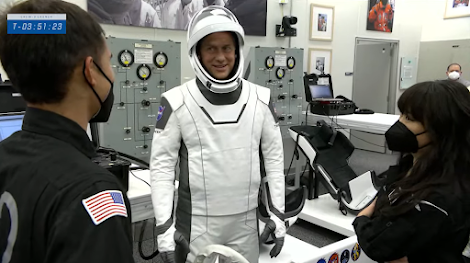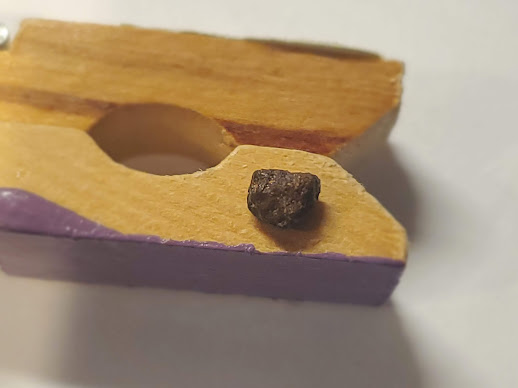During the Apollo 16 mission in 1972, commander John Young and lunar module pilot Charlie Duke performed three moonwalks for a combined 20 hours.
Lunar exploration is thirsty work, and their spacesuits had a drink bag that they filled and attached inside the suit. The bag had a small drinking tube that was positioned above the neck ring.
 |
| Insuit drinking device. Image: NASA. |
To take a drink, an astronaut leaned their head down inside the helmet and took a sip.
And then things went wrong...
 |
| Commander John Young standing by the lunar rover. Image: NASA. |
YOUNGHere is a problem that was annoying to both of us. The night before, we filled the drink bags full of orange juice in the CSM [
Command Service Module; it remained in orbit while they landed]; and the next morning prior to suit donning, we put them in the suit.
Every time we bent our head, the microphone would get caught in the drink bag and put some orange juice into the air in zero gravity or would squirt the side of your face. Charlie really got covered up with it.
It really was an annoying problem.
 |
| Lunar module pilot Charlie Duke. Image: NASA. |
DUKEMy valve was really bad.
YOUNGMine didn't work all the time, and I was really being careful. I'm sure it got all over us because once we got on the surface and looked up at the lunar module, the travano cover had orange juice all over it.
[
Travano covers provided abrasion and impact protection to select areas on the Lunar Module. They were used in areas where crew or equipment could make contact with wiring and sensitive hardware.]
It was in dots, less than 5 percent, but there was a lot of orange juice on the travano cover. I'm sure orange juice is something you don't want to float around on wire bundles. I think we need something to stop up that hole in zero gravity and in one-sixth gravity until you are ready to use it.
Maybe a cap that fits on the end of it that you could pull with your teeth would work. I think it's essential when you're going out for a 7- or 8-hour EVA [
Extravehicular Activity or "moonwalk"], you have to have something in that suit to drink.
DUKEYes, that really saved me out there.
YOUNGI took my suit off and didn't put the drink bag in right for the first EVA. I didn't get anything to drink while I was out on the Moon and that was bad. I sure could have used a drink about half-way through.
You do sweat a lot while you are out there. You sweat in your hands, you sweat at the back of your neck, and you sweat on your feet where you don't have water cooling.
We should have one that doesn't spend its time wetting you down.
And there was another problem associated with this. Before we went out the next day, Charlie had to clean the orange juice out of his microphone to get it to work. We wasn't transmitting at all.
DUKEOn VOX.
[
VOX is "voice-operated exchanged". When VOX was activated, an astronaut's radio automatically turned itself on when he started talking.]
YOUNGHe had a comm carrier with one mike gone because of a busted wire and had to suck the orange juice out of the other mike to get it to work. Now that's a pretty marginal operation (laughter).
DUKE Every time the left microphone hit that valve, the juice sort of migrated up that microphone in under my helmet, and this whole side of my head was just caked with juice.
YOUNGCharlie looked like he had been shampooing with juice.
DUKEIt was really terrible.
YOUNGThe whole side of his face was just one big mass of orange juice. We got it on the helmet seal between the second and third EVA. We cleaned the orange juice off the helmet seal because we couldn't get the helmets unlocked and off.
I thought we were going to spend the night in the pressure suit.
DUKE It really wasn't on the O-ring; it was where the two surfaces mate together.
YOUNGYes.
DUKEThe stuff had seeped in under there.
YOUNGThe vacuum dried out that thing, and left the glue there. When it was time to take the helmets off, I couldn't get Charlie's off and he couldn't get mine off. I tell you, I thought we were going to stay in the pressure suit. (Laughter)
 |
| Apollo 17 commander Gene Cernan showing drink bag placement. Image: NASA. |






















































